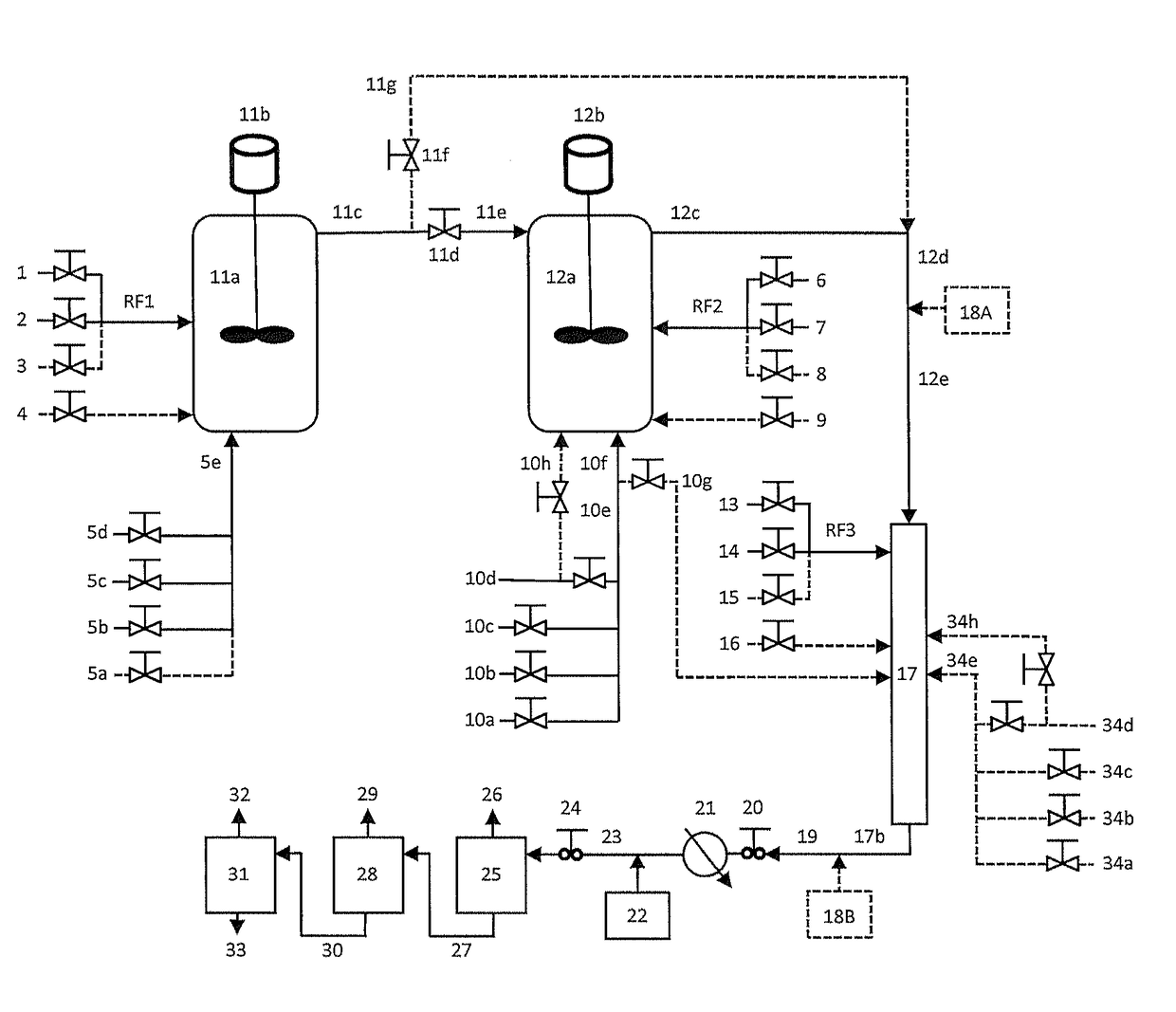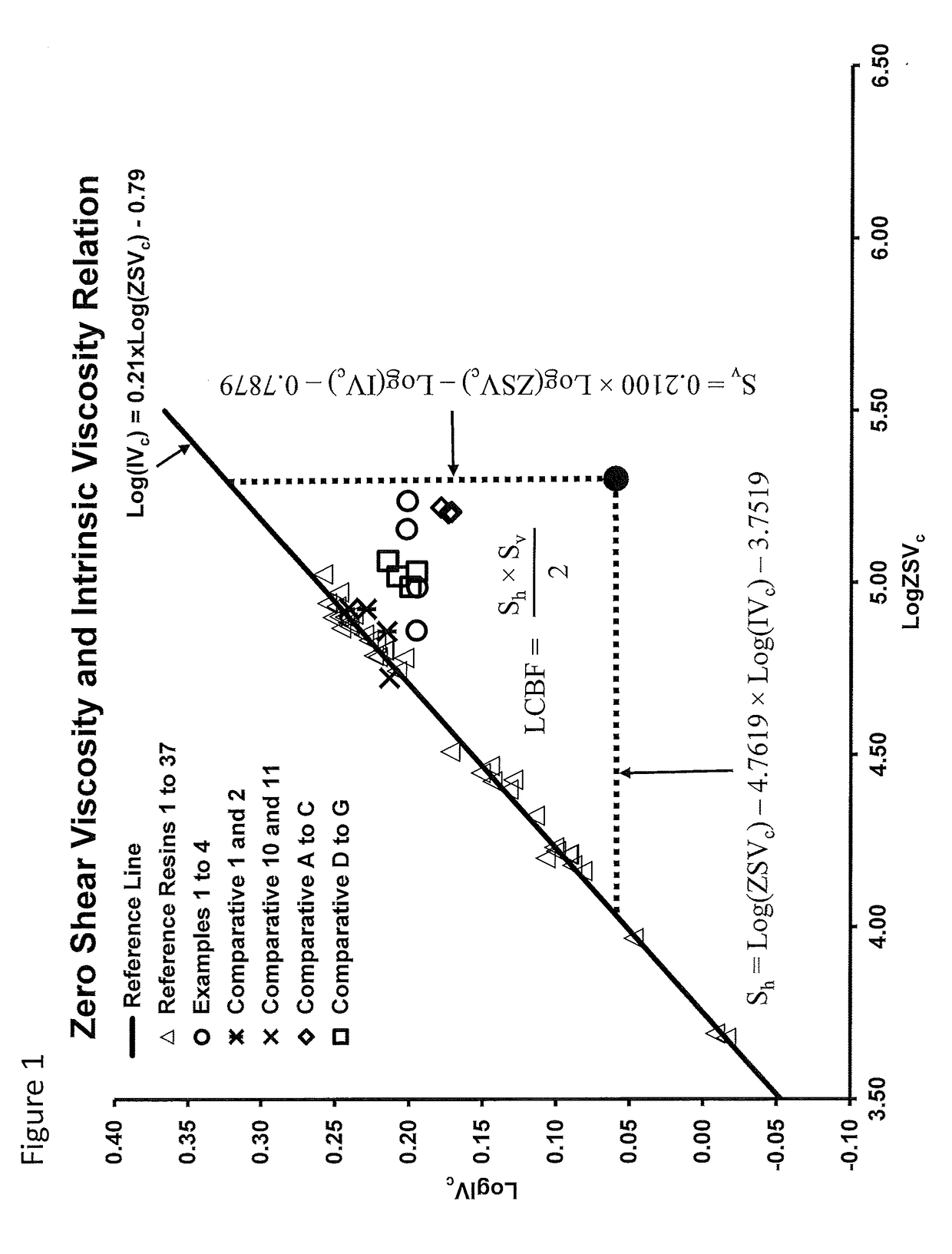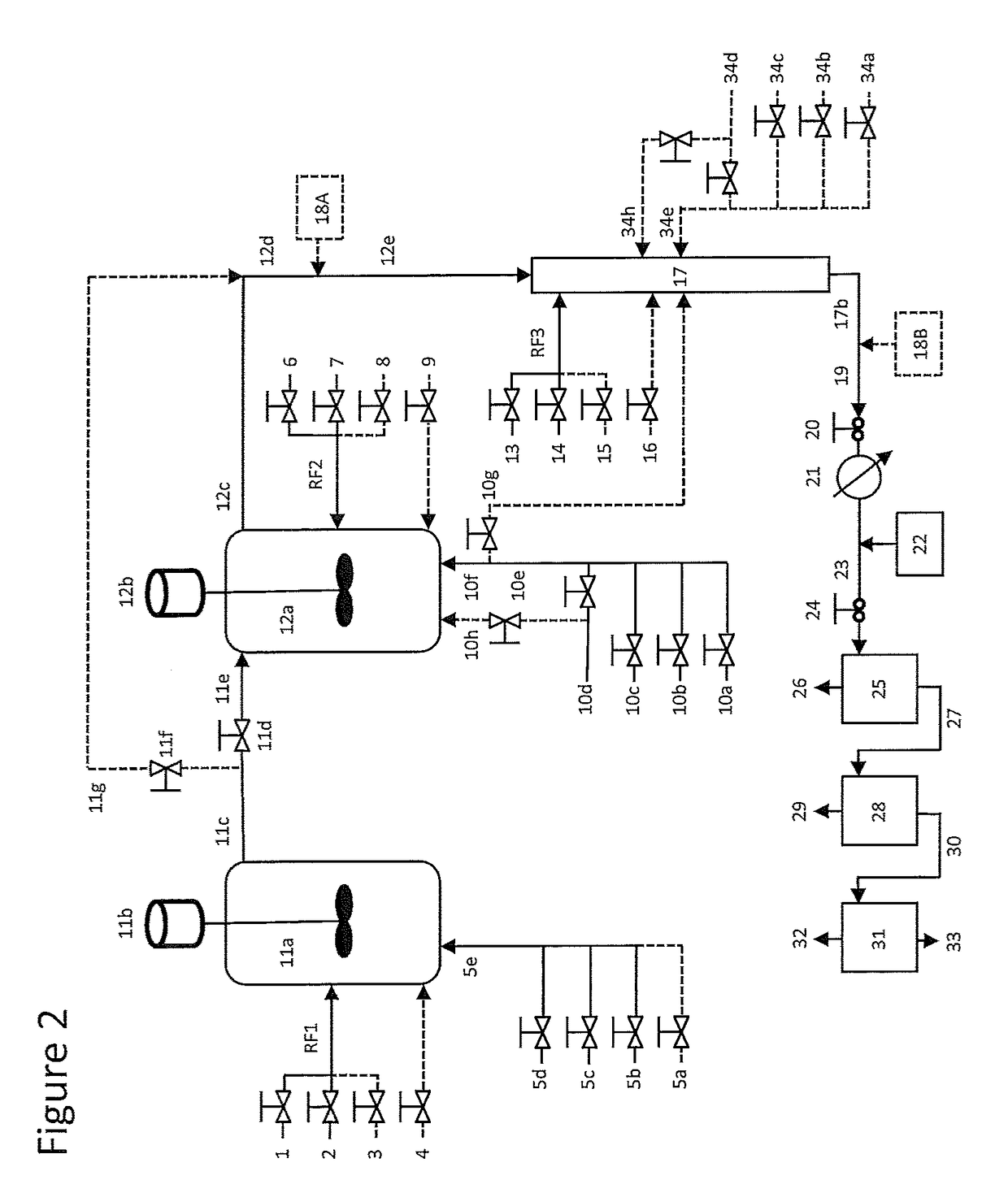Means For Increasing the Molecular Weight and Decreasing the Density of Ethylene Interpolymers Employing Homogeneous and Heterogeneous Catalyst Formulations
- Summary
- Abstract
- Description
- Claims
- Application Information
AI Technical Summary
Benefits of technology
Problems solved by technology
Method used
Image
Examples
examples
[0281]The following examples are presented for the purpose of illustrating selected embodiments of this disclosure, it being understood that, the examples presented hereinafter do not limit the claims presented.
[0282]Disclosed embodiments of the ethylene interpolymer products were prepared in a continuous solution pilot plant operated in both series mode and parallel mode as fully described below. Comparative ethylene interpolymer products were also prepared in the same pilot plant.
Series Polymerization
[0283]Series mode Examples (Example 1, 2, 4) of ethylene interpolymer products and series mode Comparatives 1 and 2 shown in Tables 4A through 4C were produced using an R1 pressure from about 14 MPa to about 18 MPa; R2 was operated at a lower pressure to facilitate continuous flow from R1 to R2. In series mode the first exit stream from R1 flows directly into R2. Both CSTR's were agitated to give conditions in which the reactor contents were well mixed. The ...
PUM
| Property | Measurement | Unit |
|---|---|---|
| Temperature | aaaaa | aaaaa |
| Weight | aaaaa | aaaaa |
| Fraction | aaaaa | aaaaa |
Abstract
Description
Claims
Application Information
 Login to View More
Login to View More - R&D
- Intellectual Property
- Life Sciences
- Materials
- Tech Scout
- Unparalleled Data Quality
- Higher Quality Content
- 60% Fewer Hallucinations
Browse by: Latest US Patents, China's latest patents, Technical Efficacy Thesaurus, Application Domain, Technology Topic, Popular Technical Reports.
© 2025 PatSnap. All rights reserved.Legal|Privacy policy|Modern Slavery Act Transparency Statement|Sitemap|About US| Contact US: help@patsnap.com



